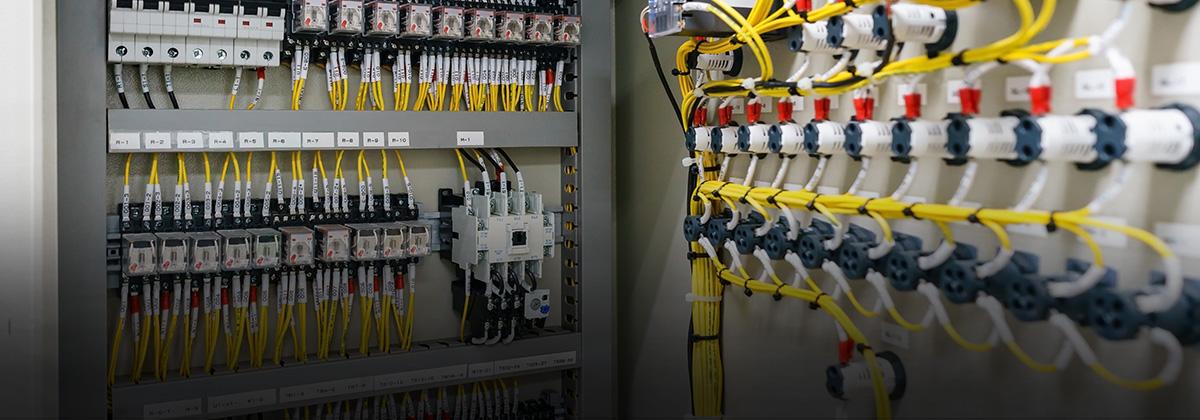When a summer heatwave hit the UK in 2022, supermarkets found their fridges and freezers shutting down as roof-mounted control cabinets overheated. It was a dramatic demonstration of the importance of effective climate control in sensitive electronic equipment.
The digital electronic equipment that keeps many processes running in today’s world is highly sensitive to temperature changes. That means the heatwaves we’ve faced this summer have had a very real impact on everything from manufacturing and transport to continuous processes and industries like oil and gas. But it’s not just climate change that is turning up the heat on process control systems.
As systems become increasingly complex, the amount of electronics packed into automation cabinets and control panels is increasing too. This means it’s inevitable that devices such as variable speed drives, which can heat up rapidly, will end up in the same cabinet as highly heat-sensitive batteries.
Not only are controls becoming more concentrated in the same cabinet, but there are rising expectations around production efficiency, resilience and reliability, all of which is increasing the need for effective thermal management and control.
"In the vast majority of cases, when electric installations and devices housed in control enclosures shut down or malfunction, the problem is thermal."Josep López, Digital UE Global Business Development Manager, Schneider Electric
“In the vast majority of cases, when electric installations and devices housed in control enclosures shut down or malfunction, the problem is thermal – excessively high or low temperatures of electrical and, especially, electronic equipment,” says Josep López, Digital UE Global Business Development Manager at Schneider Electric.
It’s been estimated that the lifespan of key components is halved for every 10 degrees centigrade increase in the working temperature within a typical control panel, he adds. This makes effective climate control within cabinets and panels critical to avoiding costly breakdowns.
Cost of failure
The cost of breakdowns, whether full or partial, can be significant. Although the impact will vary according to the type of organisation and the products being manufactured, investigations by Schneider Electric suggest that the cost of an hour of lost production at a factory making car parts, for example, is around £8,500. For a plant making microprocessors, the hourly cost could reach tens of millions of pounds.
The problem of managing temperatures in control panels is complicated by the increasing use of automation to enable remote operations. This increases the risk of damage to components when no human is nearby to spot the problem.
And, of course, global temperatures and weather patterns are becoming more extreme due to the effects of climate change – a risk that is not just confined to outdoor installations, as López points out.
"In many factories, the roof is not well insulated. So during high-temperature days, the machine control panels and the automation enclosures can suffer a lot.”"Josep López, Digital UE Global Business Development Manager, Schneider Electric
“In many factories, the roof is not well insulated,” he says. “So during high-temperature days, the machine control panels and the automation enclosures can suffer a lot.”
Climate coping strategies
So how can you design an installation that is able to cope with the peaks and troughs of an increasingly unpredictable climate? The critical element is data. Unless you have an accurate picture of the temperatures in your exact location, choosing the right climate controls is something of a lottery.
There are a range of variables in any project. The design of the enclosure itself needs to take into account not just the components it will contain, but also the air temperatures at the installation location.
The range of climate control options can also be bewildering. Air conditioning – which will maintain an even temperature at all times – is an expensive but effective option, particularly in hotter locations like the Middle East.
But in more temperate environments, powered or even unpowered ventilation may be enough. The problem for engineers is researching the available options that fit the precise conditions at their locations. If they don’t have the correct information about those conditions, the installation may fail.
Remote planning
“Each project is different and requires special attention,” says López. “But the engineering or design office may be a long way away from where the installation will be – the engineers may be in Paris while the final installation may be in, say, Vietnam.
“When the engineering or design is being done from a distance, there is a risk that they will assume the maximum local temperature, when in reality, it only hits that level for two days or even just two hours a day. This can oversize the project, wasting energy and capital.”
As projects become more complex, López says the number of variables multiplies. “These include external temperatures and humidity – especially due to climate change – machine cycles, the position of the equipment and the internal management of the flow of heat and air.”
If a reliable process is not followed, it is very likely that the project will fail with all the consequential impacts like cost overruns and process breakdowns, he adds.
To address these issues, Schneider Electric has developed a free online thermal calculation tool called ProClima Web that uses data from 10,000 weather stations around the world to provide accurate location climate data.
The user inputs information about the type of enclosure and the components it will contain, and an algorithm evaluates the best solutions for that location. It then lists a range of climate control and cabinet options by cost and complexity.
The tool, which has an A+ cybersecurity rating and is available in seven languages, can also be used to improve climate control in existing cabinets and control panels.
To find out more about ProClima Web and to register to use the free thermal optimisation tool, visit https://proclima.se.com/project





